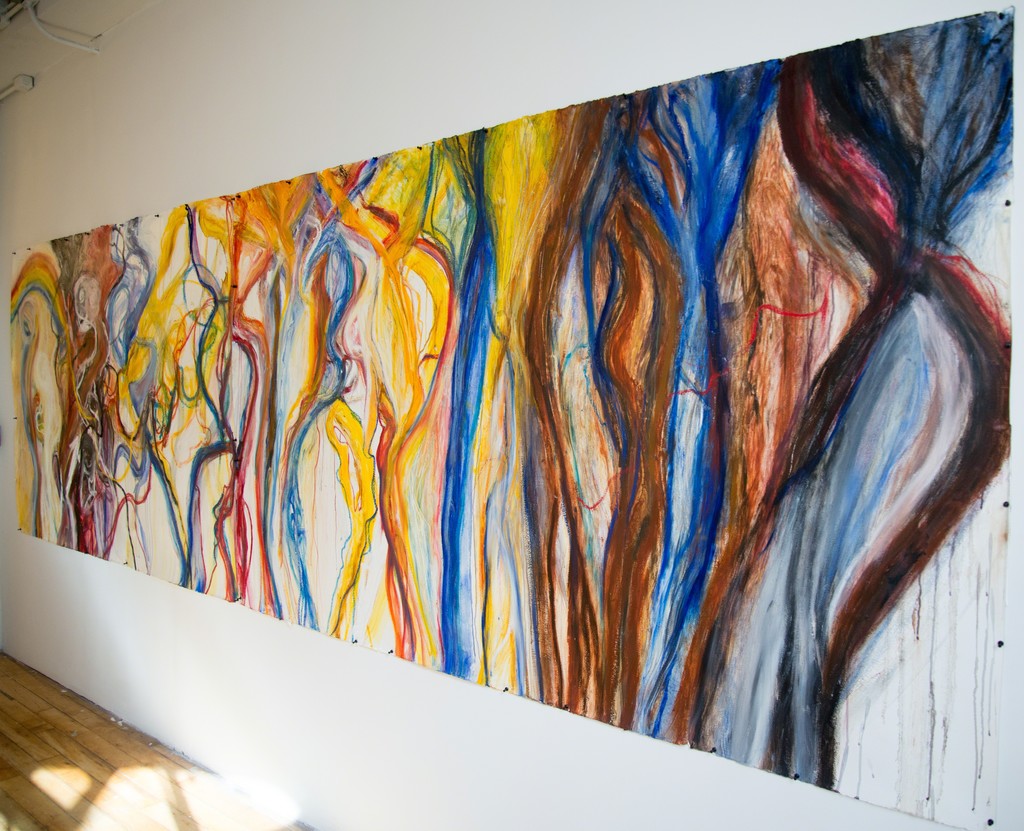When Holocaust survivor Claire Boren was a child, she and her mother spent months hiding in a hole dug under a pig sty — “about the size of a coffin,” she remembers — barely large enough to hold the two of them.
In September, she was back in Europe — this time as an honored guest at the opening of a new exhibit being presented by The Topography of Terror Foundation and the Foundation Memorial to the Murdered Jews of Europe, both based in Berlin.
The joint exhibit, “Mass Shootings: The Holocaust from the Baltic to the Black Sea 1941-1944,” is intended to honor the memories of over two million Jews, 30,000 Roma, and 17,000 psychiatric patients in the Soviet Union. Central to the exhibit are five photographs documenting the murder of some 1,500 men, women, and children in Boren’s hometown of Mizocz in eastern Poland (now Ukraine) on Oct. 14, 1942.
In Germany, Boren, 78, a longtime Rumson resident who came to the United States at the age of 11, unfolded the story of her wartime experience in a 90-minute public interview with Aubrey Pomerance, director of archives at the Jewish Museum in Berlin.
At the event, held at the Memorial to the Murdered Jews, Boren explained that months before the shootings, the Jews of Mizocz had been rounded up and confined in a ghetto, she told NJJN in a phone interview. “My most vivid memory at that time was witnessing a public hanging of Jewish men in the town square.”
She said that on Oct. 12, 1942, a non-Jewish man who had agreed to hide her family urged them to leave immediately. “He’d heard about the planned executions,” Boren said. “My mother and I fled; my father remained behind, and I never saw him again.”
Over time, mother and daughter moved from hiding place to hiding place. The worst of these, she said, was the farm with the hole in the ground. “It was pitch black all the time. We couldn’t tell day from night,” said Boren. Her mother tried to keep her occupied by telling stories.
After about three months, Boren said, she “lost all touch with reality.” This frightened the farmer who had been harboring them, and he determined that she was possessed by the devil and should be killed. Terrified, her mother ran off with her daughter, and they found their way to a group of Jews hiding in a forest.
“My uncle and two cousins were there,” she said. This made life a bit more bearable, but there was no shelter and they had only berries and mushrooms to eat.
Eventually the group was hunted down. Boren and her mother escaped, but the rest were wiped out. When rescue came at last in 1944, mother and daughter lived for a while in Russian-occupied territory, then to Poland and later to Germany, where they were assigned to a displaced persons’ camp. They stayed there for about three years. Boren’s mother remarried and gave birth to a daughter.
The one thing that sustained Boren through all of this is that, except for short intervals, she was never separated from her mother.
“My mother, Ann Goldbarten, is the true heroine of this story. She never gave up hope, and she lived to be 101,” said Boren.
On her recent trip to Germany, Boren was accompanied by her daughter, Sari Boren; her sister, Bina Abbes; Abbes’s daughter, Danyel; a friend, Fred Gates; and two representatives of the Center for Holocaust, Human Rights and Genocide Education, Dale Daniels, executive director, and Susan Yellin, codirector of the permanent exhibit being created for the center. Boren herself is a member of the board of directors of Chhange, which is located on the Brookdale Community College campus in Lincroft, and Sari Boren is a consultant on the new exhibit, which is scheduled to open in about a year.
Boren expressed gratitude to curator Prof. Ulrich Baumann for inviting her to participate in the opening of the Berlin exhibit. She offered this message for future generations: “Always remember that prejudice and hatred must be stopped whenever and wherever they occur. We must all try to do the right thing and cry out whenever we see injustice and other people persecuted. You must not stay silent.”
This article originally appeared in New Jersey Jewish News - http://njjewishnews.com/article/32448/rumson-woman-represents-survivors-at-berlin-shoa-exhibit.




